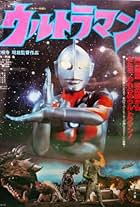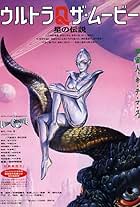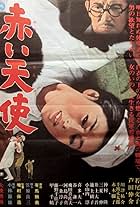Follows the life of the famous classical printmaker, Utamaro Kitagawa, set during the time when Utamaro is commissioned to produce pornographic woodblocks.Follows the life of the famous classical printmaker, Utamaro Kitagawa, set during the time when Utamaro is commissioned to produce pornographic woodblocks.Follows the life of the famous classical printmaker, Utamaro Kitagawa, set during the time when Utamaro is commissioned to produce pornographic woodblocks.
Photos
- Director
- Writer
- All cast & crew
- Production, box office & more at IMDbPro
Storyline
Featured review
Akio Jissoji can be counted as one of the mot unique talents in cinema history yet he is mostly unknown outside of Japan and even there he is not a major figure. As his films become more available we can try to get an idea of his brilliance. Few can boast his incredible photographic eye which created some the best cinematic compositions I've ever seen. His films tended to esoteric subjects so when he tackled a more mainstream story such as a biography of the famed classical printmaker, Utamaro, it's interesting to see how it goes.
The film spans the time Utamaro is commissioned to produce pornographic woodblocks by his publisher as the landscapes and portraits of kabuki actors are not bringing in much money. Utamaro is not happy and needs inspiration to create pornographic enough prints. He does this by peeping on couples in the act. When this doesn't work, he has his girlfriend raped by a drunk. Later he spies on a cripple, who is also a pornographic printmaker, as the cripple beats a prostitute unconscious and then pours hot wax on her breasts. Meanwhile a subplot with a ninja and ronin goes on.
The film is based on the end of Utamaro's career and it follows what little is known about him. The government censorship of the time is covered as well as the fact that most Japanese printmakers had to create pornography to make ends meet. The rest of the movie is conjecture including Utamaro's chance meeting with the great artist Hokusai at Mt. Fuji. Nothing is really known in detail about Utamaro's life.
I am not in favor of editing an artist's work and I do feel that Jissoji was a true artist, but now that I've seen a decent portion of his work I see that the man had some unfortunate psychological obsessions that needed somebody to temper. IT's probably why he'll never become as well known as Orson Welles or other visuals film-makers. There are many Jissoji movies that feature misogyny, torment with hot wax and naked women bound with rope and raped. Not to say that many other Japanese movies don't share these perversions, with Jissoji it's sad that it colors the greatness of his work. The above description isn't the bulk of the 2+ hour movie but it's what you walk away remembering. Perhaps including these scenes was the only way that he could get financing to do films but I don't know enough to say either way.
The beauty of parts of this movie is hard to describe. The photography and lighting is exquisite. The samurai fights are very stylish. Many scenes look like Japanese prints with bold design and colors. While this film could have been a great one, it takes the cheap exploitation route.
The film spans the time Utamaro is commissioned to produce pornographic woodblocks by his publisher as the landscapes and portraits of kabuki actors are not bringing in much money. Utamaro is not happy and needs inspiration to create pornographic enough prints. He does this by peeping on couples in the act. When this doesn't work, he has his girlfriend raped by a drunk. Later he spies on a cripple, who is also a pornographic printmaker, as the cripple beats a prostitute unconscious and then pours hot wax on her breasts. Meanwhile a subplot with a ninja and ronin goes on.
The film is based on the end of Utamaro's career and it follows what little is known about him. The government censorship of the time is covered as well as the fact that most Japanese printmakers had to create pornography to make ends meet. The rest of the movie is conjecture including Utamaro's chance meeting with the great artist Hokusai at Mt. Fuji. Nothing is really known in detail about Utamaro's life.
I am not in favor of editing an artist's work and I do feel that Jissoji was a true artist, but now that I've seen a decent portion of his work I see that the man had some unfortunate psychological obsessions that needed somebody to temper. IT's probably why he'll never become as well known as Orson Welles or other visuals film-makers. There are many Jissoji movies that feature misogyny, torment with hot wax and naked women bound with rope and raped. Not to say that many other Japanese movies don't share these perversions, with Jissoji it's sad that it colors the greatness of his work. The above description isn't the bulk of the 2+ hour movie but it's what you walk away remembering. Perhaps including these scenes was the only way that he could get financing to do films but I don't know enough to say either way.
The beauty of parts of this movie is hard to describe. The photography and lighting is exquisite. The samurai fights are very stylish. Many scenes look like Japanese prints with bold design and colors. While this film could have been a great one, it takes the cheap exploitation route.
Details
- Release date
- Country of origin
- Language
- Also known as
- Utamaro's World
- Production company
- See more company credits at IMDbPro
Contribute to this page
Suggest an edit or add missing content

Top Gap
By what name was Utamaro: Yume to shiriseba (1977) officially released in India in English?
Answer





















